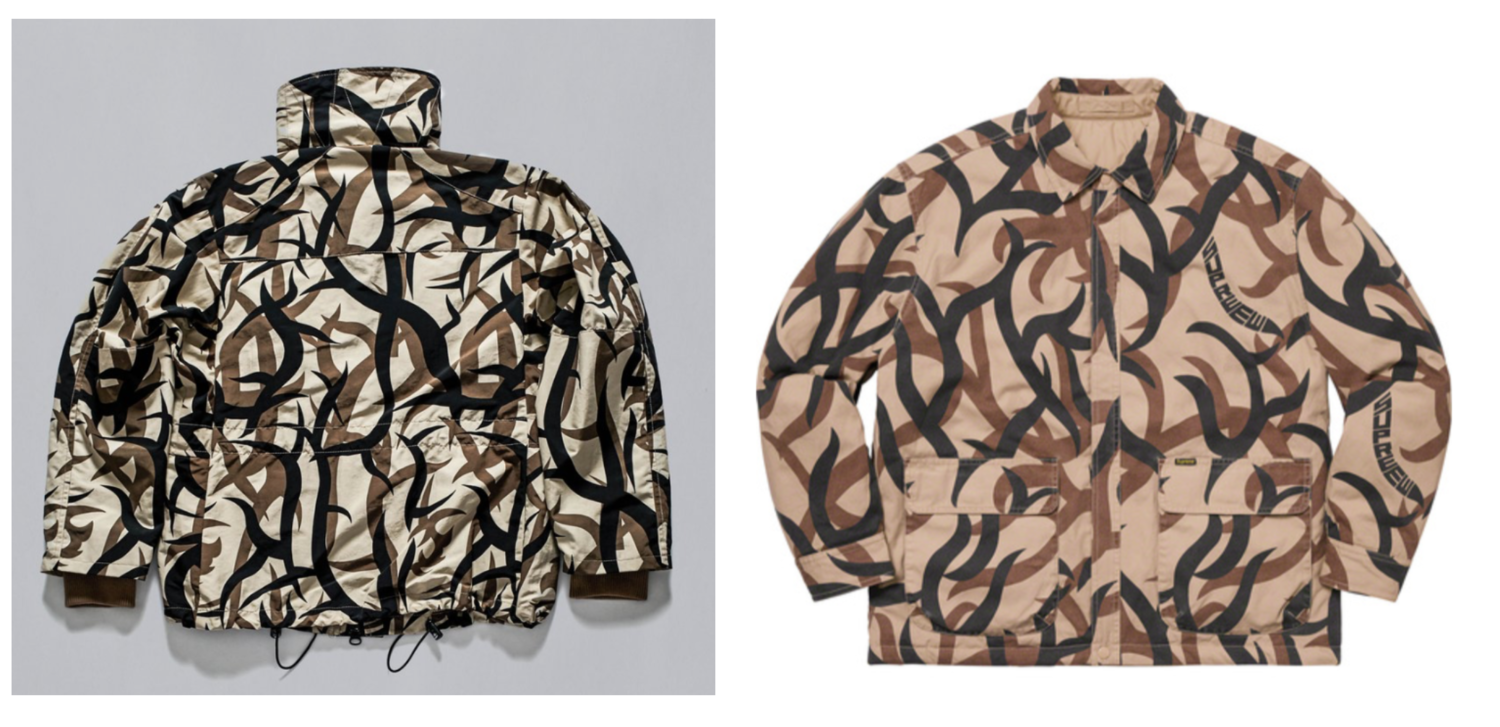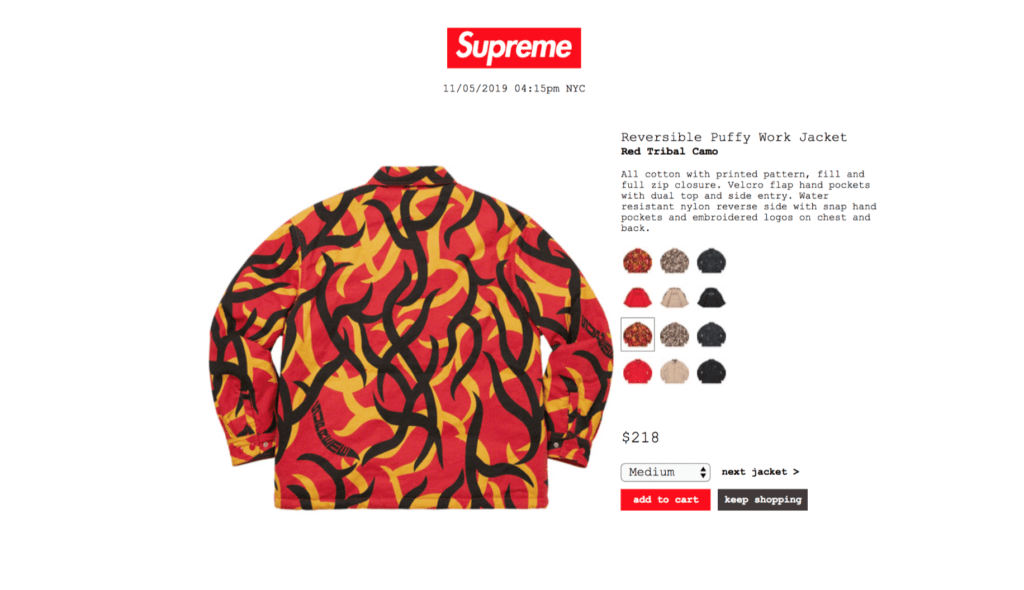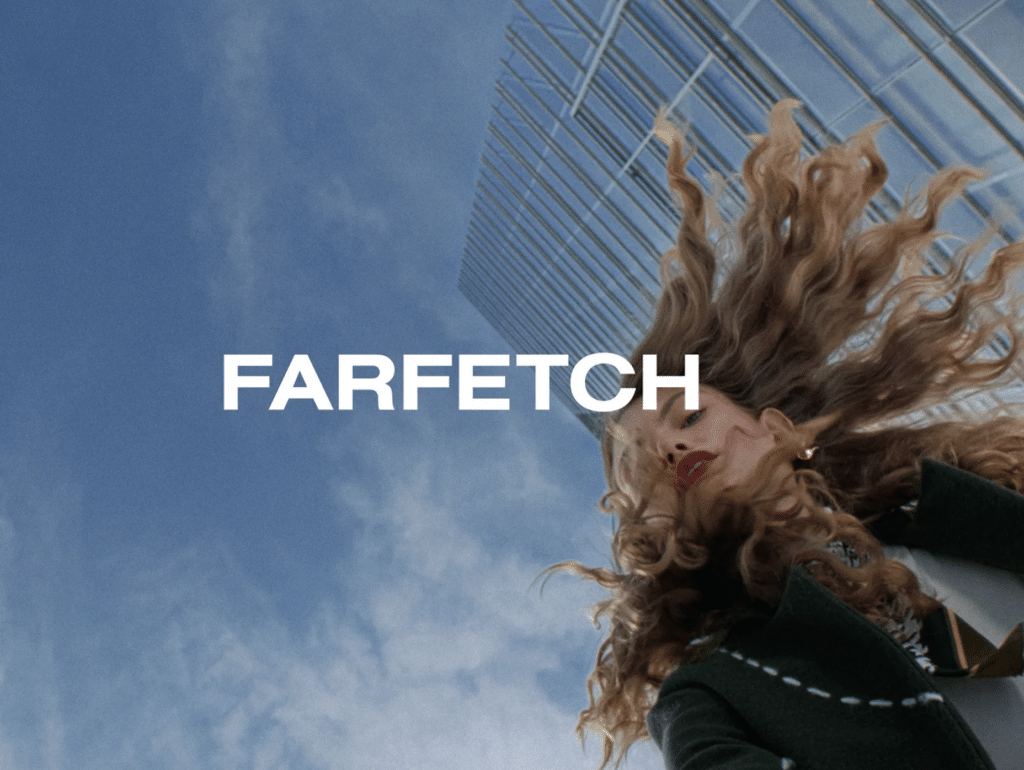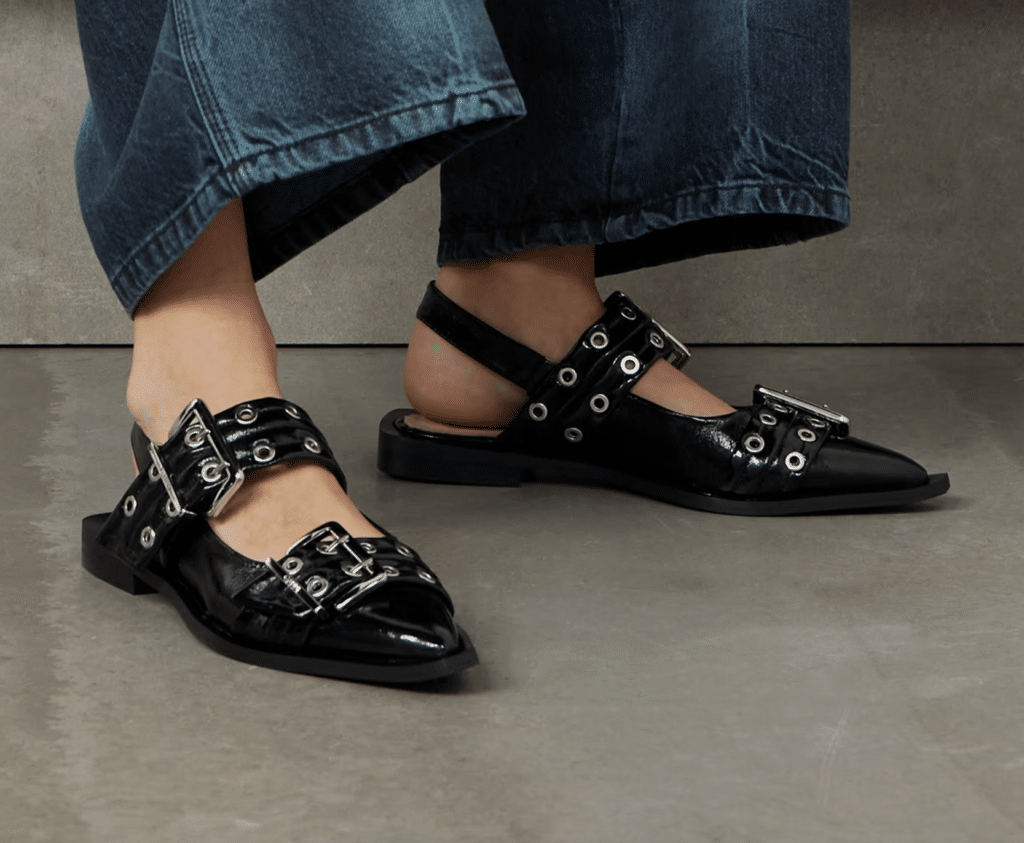After being sued for copyright infringement in November for allegedly hijacking another company’s camouflage print for its own hot-selling wares, Supreme has filed its formal response with a New York federal court. In its answer dated January 6, the wildly-popular streetwear brand’s corporate entity Chapter 4 Corp. denies that it has run afoul of federal copyright law and argues that even if it might otherwise be liable for infringement, as plaintiff ASAT Outdoors LLC claims, that liability is shielded by a handful of defenses, including fair use.
According to its 6-page answer, Chapter 4 Corp. “admits that it did not license the [camouflage print] design directly from plaintiff [ASAT Outdoors],” a Stevensville, Montana-based outdoors-wear maker, but at the same time, denies that it infringed ASAT’s copyright in the print “by reproducing and publicly displaying [it] on its apparel,” including its $218 “work” jackets and $145 cargo pants, and then “selling on [its] website and in stores.”
Chapter 4 goes on to take issue with ASAT’s assertion that “author of the [camo print] and has at all times been the sole owner of all right, title and interest in and to the [print].” In denying this claim, Chapter 4 is seemingly referring to the fact that, at least according to U.S. Copyright Office records, ASAT may not have actually created the print, but instead, acquired it – and the copyright for it – from another company almost two decades ago.
While that transaction may technically mean that ASAT did not create or initially hold the copyright for the camo print at issue, that does not mean that ASAT lacks exclusive rights in it now. As the current copyright holder (as reflected in a formal assignment of the copyright from military-related outdoor product company Brigade Quartermasters, Ltd. to ASAT in late 2003) for the camo print, ASAT has the exclusive right to use the print, among other things, and the right to sue others that use the print without its authorization.
 ASAT camo jacket (left) & Supreme camo jacket (right)
ASAT camo jacket (left) & Supreme camo jacket (right)
Technicalities aside, Chapter 4 goes on to set forth eight defenses, arguing that ASAT’s copyright infringement claim is barred “in whole or in part” by “an express or implied license” that Chapter 4 seems to argue that it had to use the print, as well as by “the doctrines of acquiescence, estoppel, or waiver.” Beyond that, Chapter 4 claims that the copyright registration cited by ASAT “does not cover the [print at the heart of the] lawsuit,” thereby, standing in the way of ASAT’s infringement claim.
And still yet, it argues that ASAT’s claims are “barred by fair use,” a copyright law doctrine that applies when the copying of a copyright-protected work is done for a limited and “transformative” purpose, such as to comment upon, criticize, or parody that work. It is unclear how – exactly – Supreme’s alleged use of ASAT’s print would be covered by fair use here, especially considering that one of the key factors in any fair use test is whether or not the allegedly infringing work is used in a commercial capacity. Given that Supreme sold products bearing the print that it allegedly used without ASAT’s authorization, it is safe to say that commerciality is at the heart of its use.
With the foregoing in mind, and considering that it argues that ASAT suffered “no damages as a result of any conduct by [Supreme],” Chapter 4 says that ASAT’s complaint should be dismissed in its entirety, and ASAT should have to pay to cover its legal fees in connection with the case.
*The case is ASAT Outdoors, LLC v. Chapter 4 Corp., 1:19-cv-10462 (SDNY).











